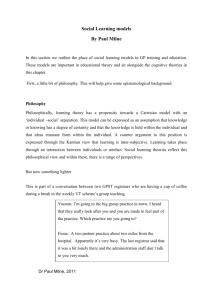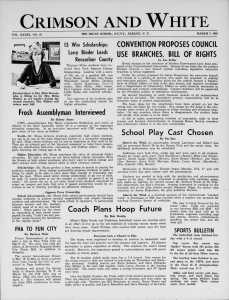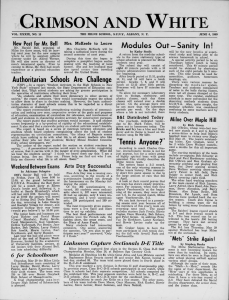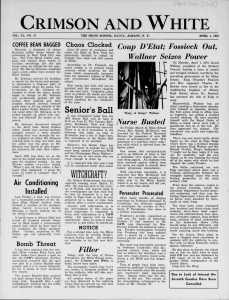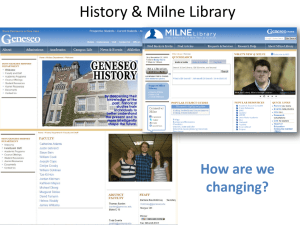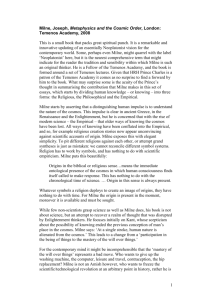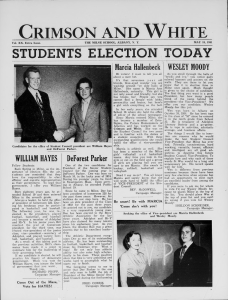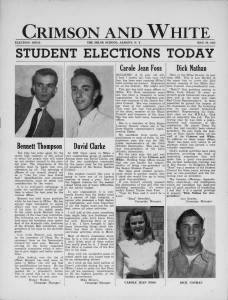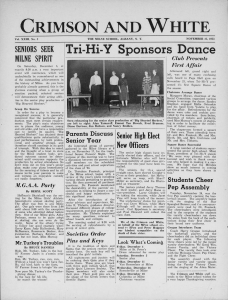Interviewing-and-fraud-Becky-Milne
advertisement
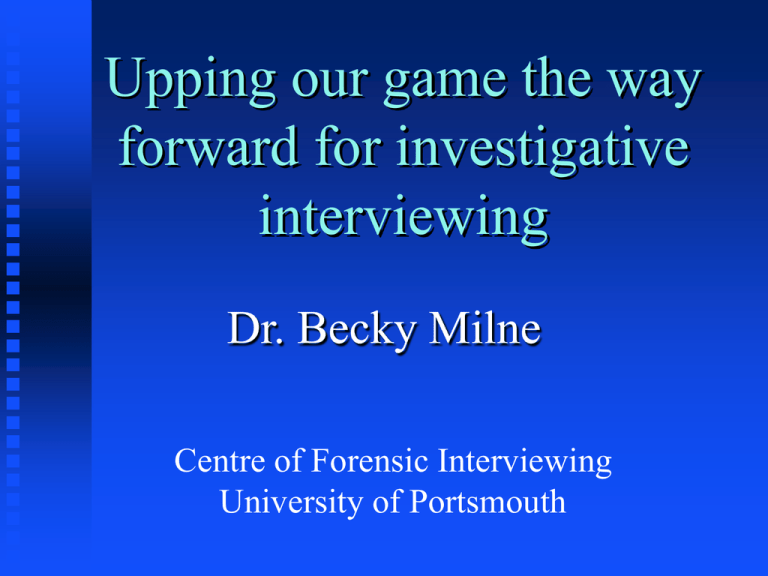
Upping our game the way forward for investigative interviewing Dr. Becky Milne Centre of Forensic Interviewing University of Portsmouth What is an investigator’s job: reactive investigation? Two Primary investigative questions: What happened? If anything did happen? Who committed the offence? Milne and Bull (2006) How do investigators answer these two primary investigative questions? Gather information from a number of sources (Kebbell & Milne, 1998) People Interview is pivotal – wide definition Performance measure: quality and quantity of information - contamination Interviewer behaviour Importance of interviewing: suspects Miscarriages of Justice (Cardiff 3 etc). Central to acquittal - police interview with suspects McGurk et al (1994) - most frequent task Milne and Bull (1999) - most important job Limited guidance to do this ethically PACE and PEACE developed Minimal training around the globe Aim of PEACE “Course aimed to ensure that the basic interviewing skills necessary to apply the model were developed for the interviewing of all interviewees (witnesses, victims and suspects) with integrity and in accordance with the law. Shaw (1996) Did PEACE work? – suspects Clarke and Milne (2002) P&P: Engage & Explain: Good: Poor: conform to legal requirements check understanding of caution interview process and purpose rapport Account: average skill level Good: Poor: average skill level self-confident and communication skills relevant topics and questioning Summaries, links and challenges Closure: poor skills level PACE (1984): Sections 76 or 78 10% (17) breaches 5 oppression Undue pressure and bullying Continual challenge 3 mental health issues 7 legal requirements Failure to caution Explanations missing concerning legal advice 2 other Background noise Overuse leading questions PEACE and counter-fraud Formally adopted for public sector fraud investigations in 1990s Walsh & Milne (2006) – DWP 99 interviews benefit fraud suspect interviews Good use of open questions- facilitated info from suspect Legal and ethical Poor rapport Poor planning Not covering points to prove sufficiently Lack summaries Reasons for committing offence Shawyer & Milne (2009) Questionnaire and examined actual interviews DWP and police fraud interviews/ers Advantages ‘…it focuses the mind on the interview with crib notes. It helps on the format and flow of questions…’ (DWP) Disadvantages ‘…PEACE in (some) cases is often a “sledgehammer to crack a nut”…’ (DWP) Performance in interviews Planning and prep. – good performance Rapport – poor Checked caution understanding appropriate Use of questions poor Few open questions Majority appropriate closed Some leading Closure adequate Walsh & Milne (2007) Questionnaire to investigators and managers – views General support Is it effective? Time Inflexibility Supervisory of the model framework to ensure standards The importance of witnesses/victims Sanders (1986) - central and most important feature of criminal investigations Kebbell and Milne (1998) - central leads Milne and Bull (1999) - cornerstone of investigation often no other forensically relevant info. Planning and preparation prior to suspect interview outlines areas to prove an offence determines possible offenders Clarke & Milne (2002) Interviewing was poor Limited use CI or CM Closed questioning style Interviewer driven and confirmatory “far more leading questions asked, most interviewers didn’t allow the witness to tell their account and the interviews were mainly police led” ACPO Five Tiers Tier 1: Probationer and police staff Tier 2: Uniform investigators & detectives Tier 3: Specialist Interviewers Tier 4: Interview manager (supervision)/PIP Tier 5: Specialist interview management and co-ordination Do the Tiers work?: Suspects Griffiths and Milne (2005) Study one – Does advanced interviewing work? 49 AIs Pre examined – assessment and post training examination – simulations Improvements across all skill areas Pre- training Mean SD Post- training Mean SD Overall 3.18 0.31 4.19* 0.35 E&E 2.68 0.53 4.15* 0.35 Legal Beh 3.95 0.46 4.54* 0.30 Rapport Behs 1.96 0.75 3.96* 0.42 Account 2.83 0.50 4.08* 0.48 Topics 2.96 0.54 4.02* 0.61 Summarising 2.33 0.77 3.90* 0.78 Do the Tiers work?: Suspects Griffiths and Milne (2005) Study two – Do skills transfer to real life? Do the skills stay over time? End of course baseline vs real life within 6 months (mean 3 months) vs real life 10 months plus (mean 19 months) 27 AIs = 81 interviews Transference immediately into the workplace Skill erosion seen over time Post-training Mean (SD) Real-life Time 1 Mean (SD) Real-life Time 2 Mean (SD) E&E 4.12 (0.34) 4.08 (0.35) 3.81 (0.52)* Legal Beh 4.54 (0.31) 4.58 (0.25) 4.50 (0.29) Rapport Behs 3.91 (0.41) 3.73 (0.51) 3.45 (0.80)* Account 3.94 (0.76) 3.81 (0.76) 3.55 (0.80)* Topics 3.91 (0.72) 3.88 (0.93) 3.74 (0.84) Summarising 3.68 (0.66) 3.40 (0.98) 2.89 (1.23)* Conclusions: the future Front-line interviews: Dando, Wilcock, Milne & Henry (2010): quick and not complex Telephone exchange – call handling Technology Counter-fraud specific interview model? Detecting deceit Using the ECI – reverse order recall (Vrij, Mann, Fisher, Leal, Milne & Bull, 2008)
